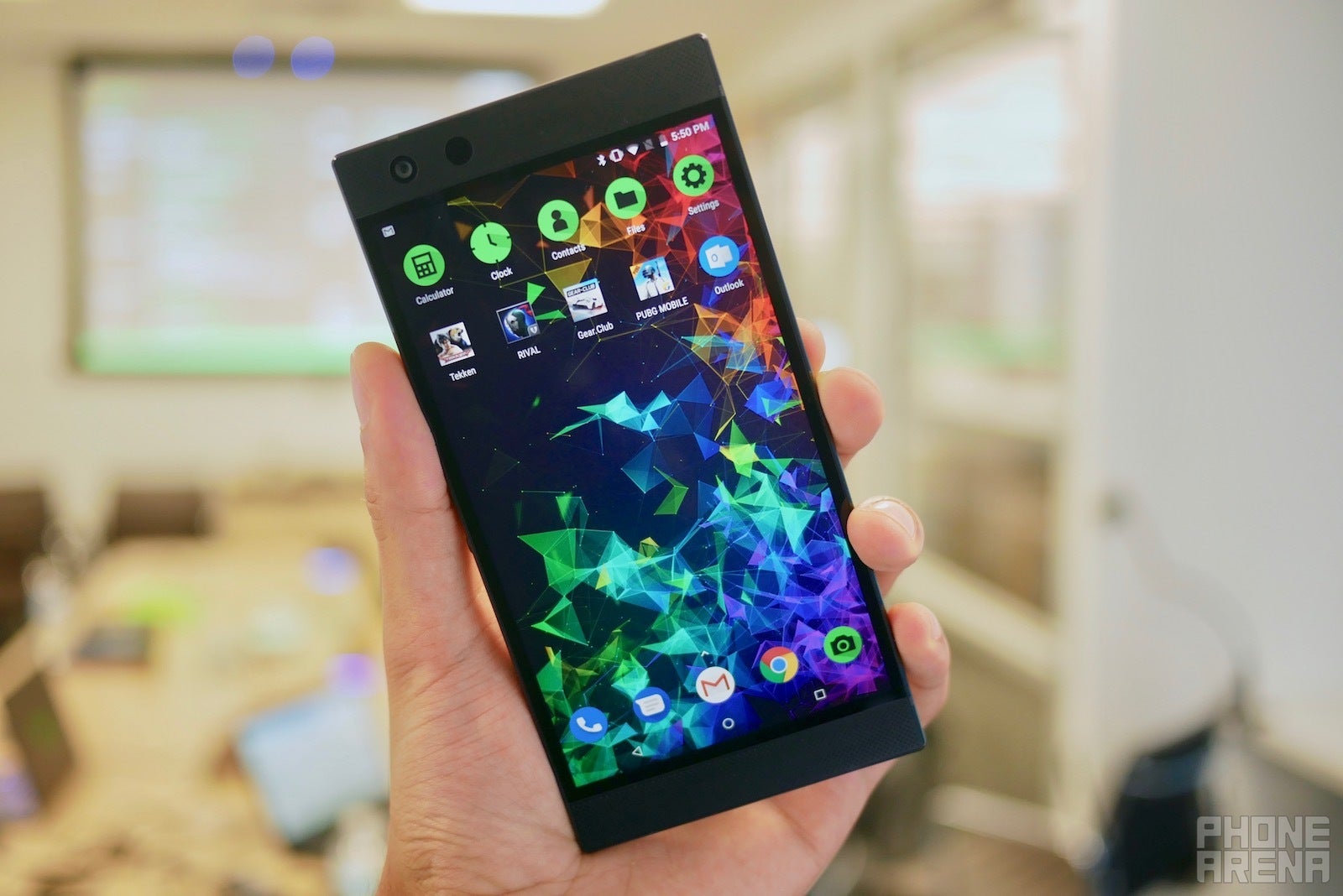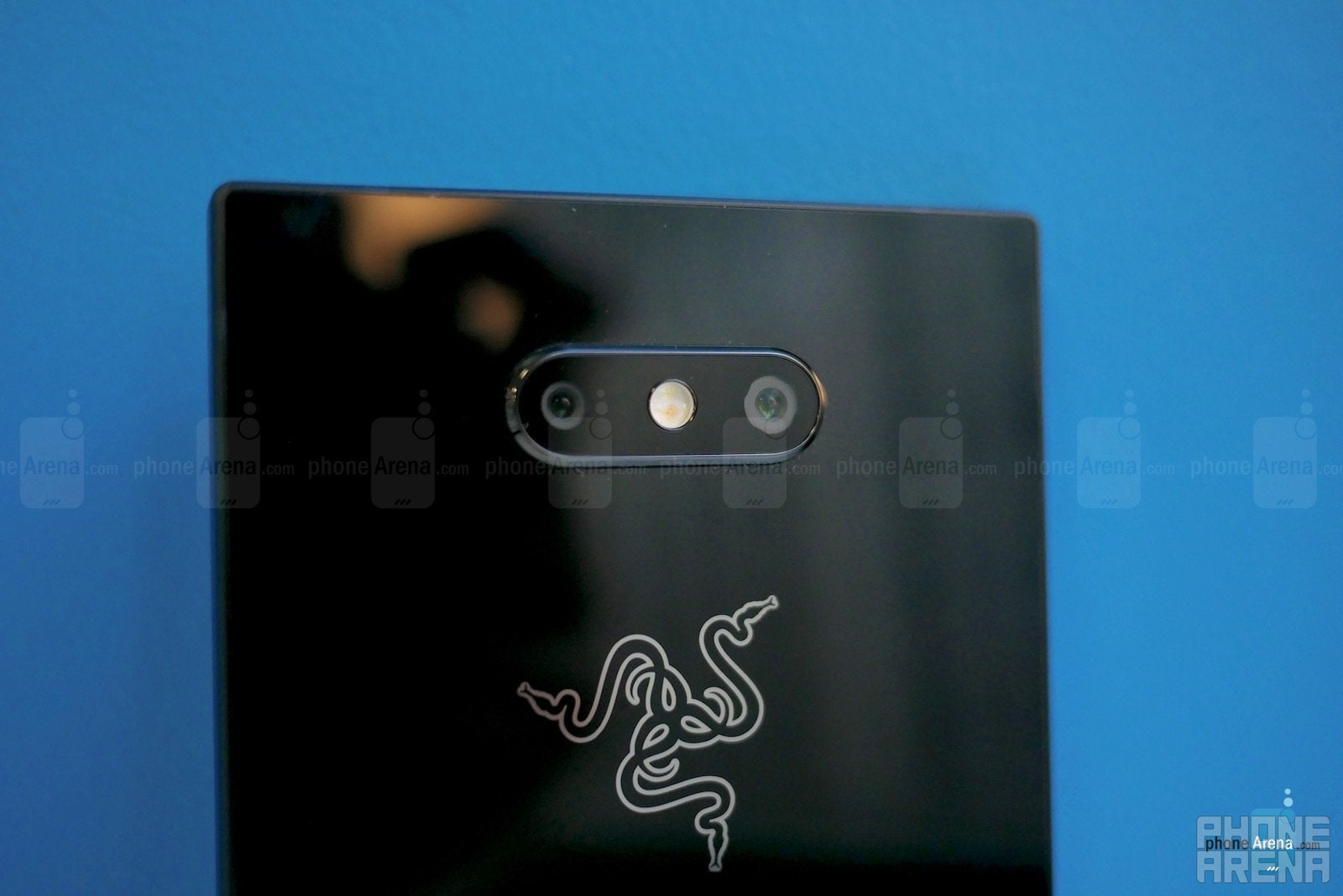Razer Phone 2 Hands-On: The gaming daily driver becomes more drivable

Design

More on the cameras in a bit – we can’t stop staring at the pulsing insignia. Not only can you customize the pulse pattern and colors which appear, but Razer’s also programmed this to light up from notifications, and do so based on the primary color of the app. At this time, choosing colors for each app isn’t an option, but instead the phone will illuminate with blue if you receive an Outlook notification, or red if from Gmail. This works with all apps, simply by pulling from the apps primary color. This feature also carries over to Razer’s charging stand, sold separately.
Display

The Razer Phone 2’s display has also received some key improvements. Chief among them is the max brightness, which is nearly doubled over last year’s paltry 364 nits, now reaching a much more usable and versatile 645 nits. This 5.72-inch, Quad HD (1440 x 2560 px) display still employs its most clear advantage with its 120hz, buttery-smooth refresh rate while also improving on overall colors and dynamic range.
Media

Speaking of dynamic range, watching video on the Razer phone was quite the treat. Colors appear deep and vibrant, and motion is of course very smooth. Aiding this experience is the dual-stereo, quad-speaker setup. Razer wouldn’t comment on how much bigger these speakers are than on the original, but the size has been increased and we can’t wait to put it through our benchmarks and deeper real-world use, but suffice it to say, this hardware and the tuning necessary for Dolby Atmos make this is one loud, and crisp phone – the only one certified by Netflix for HDR content and Dolby Surround 5.1, in fact.
There is no 3.5mm jack on the Razer Phone 2, but you do get an analog adapter that plugs into the USB Type-C port of the phone, letting you use a set of wired headphones with it.
Interface, Performance, and Battery

As we saw last year, Razer doesn’t do much to the aesthetics of the Android 8.1 loaded within this year’s Razer Phone, but does replace a few of the regular apps, like calculator and contacts with some Razer-built green icons. Game Booster and the Chroma app are among the more proprietary features though.
Built with Qualcomm’s Snapdragon 845 and 8 GB of RAM with 64 GB storage the Razer phone is meant to perform, and as far as day-to-day tasks go, you’ll not be left wanting for anything – especially with the beautifully smooth flow of the 120Hz screen.
We’re also glad to see that the new glass back allows for wireless charging and the Razer Phone 2 comes with a Qualcomm QuuckCharge4+ cable for quick and effortless charging – juicing up from 0 to 50% in just 30 minutes.
Gaming
Razer wants this beast to be your daily driver, but of course, they want you to take it out on the open road and open up that throttle. Throttling, actually, is what Razer worked to combat the hardest here. Utilizing the same Vapor Chamber cooling system found in Razer’s laptops, and indeed last year’s Razer Phone, the company has expanded the reach of this water cooling system by widening it to span across the phone, not just the processor. This, paired with the latest Qualcomm silicon, means longer gaming without throttling and up to 30% better performance overall, Razer says.
Camera

The new experience is quite evident in the camera interface, as well. Razer’s highest priority here was increased intuitiveness and quicker, more fluid operation. This also carries through to photo capture, which uses a new autofocus algorithm and decreased capture latency. We’re happy to hear that the camera was overhauled, since the previous Razer Phone left a lot to be desired. All sounds well on paper here, though, so we can’t wait to see what the company was able to produce.
Expectations
The Razer Phone 2 aims to offer a premium experience in all aspects. Top-of-the-line internals, a revamped design, and cameras built from the ground up are music to our ears and exactly what we wanted to see from the Razer Phone’s successor. But can it out-daily drive the best in the biz AND out-game them?
That remains to be seen but pricing the Razer at $799 isn’t a bad start. Pre-orders start at 12:00am PT on Razer.com.
Follow us on Google News













Things that are NOT allowed:
To help keep our community safe and free from spam, we apply temporary limits to newly created accounts: